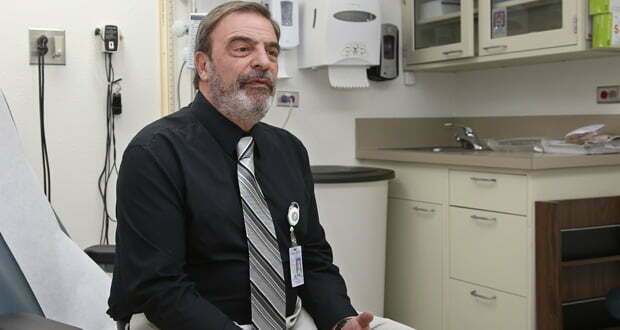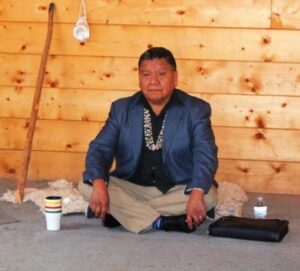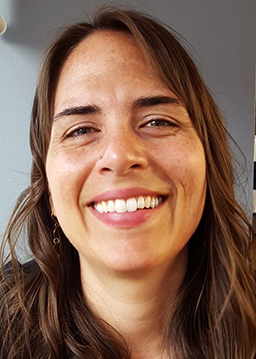And it’s time to take pause and work on screening and treatment

Source: CDC
As Americans emerge from the COVID-19 pandemic, public health experts are sounding the alarm for a new health crisis – sexually transmitted infections.
The latest data released from the Centers for Disease Control and Prevention (CDC) is distressing, showing that from 2015-2019 STIs in America were skyrocketing. During this period, chlamydia increased by 19 percent and gonorrhea by 56 percent. Even more alarming, syphilis jumped 74 percent.
Now, we are coming out of a pandemic, during which many clinics stopped performing normal STI testing. This means that while infections likely remain high, fewer people are aware of their status.
“Clinicians working across Indian Country are very concerned,” said Dr. Jorge Mera, Director of Infectious Diseases for Cherokee Nation Health Services, the largest Tribally operated health care system in the in the United States. “In just the last few months, physicians have reported seeing more patients with ocular syphilis than they’ve seen in the last decade. It is my fear that this is just the tip of the iceberg.”
As faculty for several ECHO programs widely attended by clinicians from across Indian Country, Dr. Mera’s words should cause all of us working in the Indian healthcare system to take pause.

Many of us are acutely aware that American Indian and Alaska Native communities face significant health disparities across the board. But what is alarming is how quickly a pandemic that stretches the limits of our clinics and hospitals, can exacerbate pre-existing health crises. These pre-existing health issues are not an issue of behavior, American Indian and Alaska Native people, and other racial or ethnic minorities do not have more sex or more unsafe sex than others. It is lack of access to diagnosis and treatment that is fueling this increase in STIs. When people are unable to seek or receive care because of socioeconomic barriers, treatable diseases, like STIs, will persist at higher rates. When higher rates of transmissible infection persist, it is more likely that those in the community will be exposed to the infection. Increasing STI rates are not a behavior issue, it is a disparity issue.
So, what can we do? Firstly, we can work on screening everyone who comes into our clinic doors, regardless of where they are going. Especially with the alarming syphilis and congenital syphilis rates in our Nations, we must screen everyone. That means screening people who are coming in for podiatry, diabetes, emergency or dental… that means screening people who have nursing only visits, or are simply picking up a prescription in pharmacy. Standing orders and screening reminders have worked to facilitate this approach in clinics. Some clinics have also created a process by which people can simply walk up to the lab and request a STI screen, no questions asked, barriers removed. Another way to increase screening is to take screening outside the walls of the clinic. Special screening efforts, events and mobile units are being used to screen people in the community, and work extremely well for people who are not accessing the clinic at all, people who are houseless, using drugs or incarcerated.
Second, we need to ensure access to treatment. Disease Intervention Specialists, investigate, prevent, control, screen and detect communicable diseases. This cohort of professionals can be instrumental in surveillance and follow up treatment with patients and contacts. This type of outreach was proven very effective during COVID19. Similarly, the importance of reaching patients rather than waiting for them to arrive in clinic applies to syphilis; in a syphilis outbreak from 2017, a majority of diagnoses came not from primary care screening but rather from partner services outreach. These and other expanded diagnoses and treatment interventions were mission-critical in getting ahead of the COVID19 epidemic. Ensuring that these services remain or are picked back up are instrumental for addressing the drastic increases in syphilis and other STIs.
These same staff can be instrumental in ensuring that people are treated. Field-based treatment of STIs, including syphilis, has been instrumental in some locations. Public Health Nurses have stepped up to the call in many clinics to provide not only screening, but also treatment in the field. Armed with Epinephrine Auto-Injectors, PHNs are treating in the field, ensuring the health system closes the loop of syphilis treatment.
These efforts can help with concerns from experts, like Mera, who said that “when we more fully emerge out of the pandemic, this may drive STI rates even higher. Without proper screening, treatment, and disease management, our community members may be at risk for developing significant long-term health complications.”
To support IHS, Tribal, and urban Indian (I/T/U) clinicians in effectively addressing emerging concerns like STIs, please join our Infectious Disease ECHO Program. Here Dr. Mera, alongside his colleague, Dr. Jonathan Iralu, Chief Clinical Consultant for Infectious Diseases for Indian Health Service, works to grow clinicians’ ability to prevent, identify, treat, and manage infectious diseases – like chlamydia, gonorrhea, syphilis, and HIV.
Similarly, the Alaska Native Tribal Health Consortium (ANTHC), has developed an Infectious Disease ECHO Program focused on hepatis C, HIV, PrEP, and STIs. Like it’s sister program, ANTHC’s sessions offer the opportunity to engage in didactic and case presentations, receive recommendations from specialists, and network with colleagues across Indian Country.
Want to learn more?
Join Indian Country ECHO’s Infectious Disease ECHO:
- 3rd Thursday of each month @ 11am PT IndianCountryECHO.org/program/infectious-disease
Join ANTHC’s Infectious Disease ECHO:
- 2nd Tuesday of each month @ 12pm AK ANTHC.org/project-echo/hcv-hiv-prep-stis-echo











































